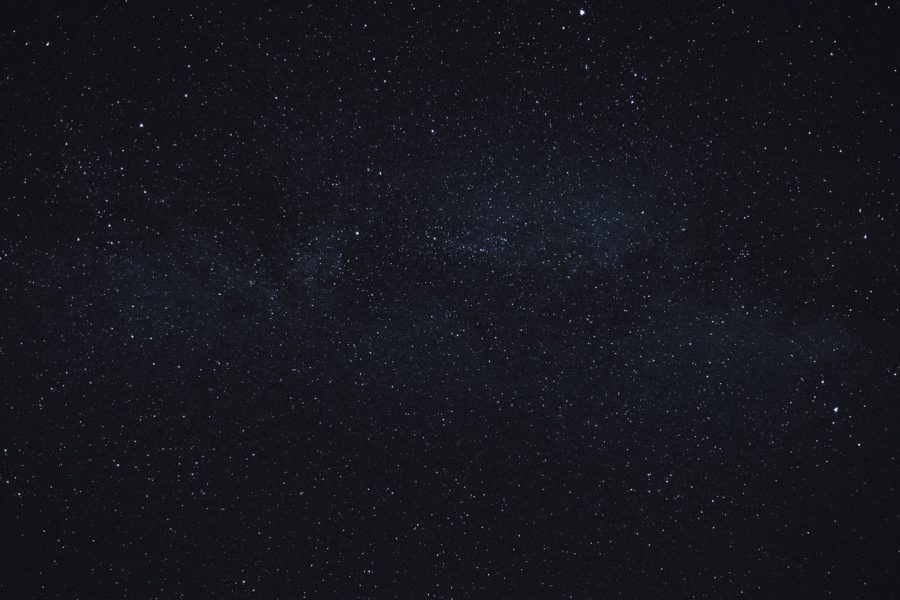Black Holes: the mystery
May 2, 2019
Recently, human’s first ever photo of an actual black hole was taken by the Event Horizon Telescope Project…
Looks like the Eye of Sauron from The Lord of the Ring, doesn’t it? Although four years ago was the detection of Gravitational Waves (the ones detected are a distortion of spacetime that propagates as waves that travels at the speed of light through the universe that is produced by two colliding masses, although everything on Earth are capable of producing Gravitational Waves, but they are too weak to pick up.) provides some proof of the Black Hole’s existence, but a direct proof of Black Holes like this in the form of a photo is the first time ever in human history.
All the way back in time as early as 1915, Black Holes were merely a prediction resulting from solving the Einstein Field Equations of the Theory of General Relativity (by the way, a guy named Karl Schwarzschild solved it) in which describes the fundamental interaction of gravitation as a result of spacetime being curved by mass and energy. Then over the course of the century, through different studies from multiple researchers is when the Black Hole we know nowadays finally take its shape.
So what is a Black Hole?
A Black Hole forms when internal pressure of an object (usually outer-space celestial bodies, but are not limited to) that has a certain huge mass that it can no longer resist it’s own gravity. It collapses onto itself and boom, a new Black Hole is formed (although it doesn’t always result in a Black Hole, and it isn’t the only way a Black Hole will form). We do know Black Holes will continue to grow by absorbing additional matter like gas or interstellar dust in space.
A Black Hole itself is invisible due to one of its defining features: the gravity of a Black Hole is so strong that even light cannot escape past the region of the Black Hole known as the Event Horizon. You might wonder, how is there a photo of the Black Hole when no light can escape it? Well, it is taken using a method called Submillimeter Wavelength Observation, which measures the radiation around objects.
So, taking a ‘photo’ of the Black Hole is actually taking a photo of the radiation around the Black Hole that outlines the Black Hole itself.
Like mentioned above, Event Horizon is the part that traps everything in, but what is real marvelous is that due to its unimaginably massive gravity, the casual law of physics that works on Earth doesn’t work for it. According to Einstein’s Theory of General Relativity, time is actually slower if you are near regions with high gravitational potentials, and vice versa, if you are in regions with lower gravitational potentials. Now imagine if you fall into a Black Hole and we don’t care about the fact that you will ripped into particles for now, guess how much time it would take you to reach the Event Horizon? Take a good wild guess.
Alright, answer revealed: Theoretically, it will take you an infinite amount of time to reach the Event Horizon because of its massive gravity. Scary, right?
At the center of a Black Hole, in the region called Gradational Singularity, its been said that the point contains huge mass but it is infinitely small (One-dimensional point). So its volume is zero, but because mass exists inside of it, the masses must be compressed to a zero volume, therefore its density is infinite… another scary fact, isn’t it?
There is just too much to talk about when it comes to Black Holes! I hope these facts have blown your mind.
To learn more about it:
https://www.ligo.caltech.edu/page/what-are-gw
https://www.ligo.caltech.edu/page/gw-sources
https://www.nasa.gov/audience/forstudents/5-8/features/nasa-knows/what-is-a-black-hole-58.html
http://www.astronomy.com/news/2019/04/how-to-take-a-picture-of-a-black-hole
https://en.wikipedia.org/wiki/General_relativity
https://en.wikipedia.org/wiki/Event_horizon
https://en.wikipedia.org/wiki/Gravitational_singularity
https://en.wikipedia.org/wiki/Black_hole







